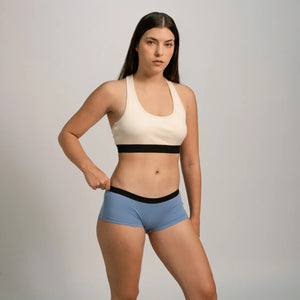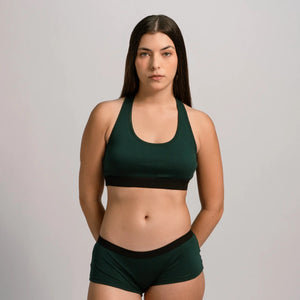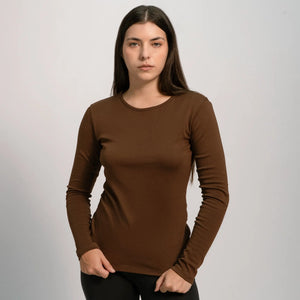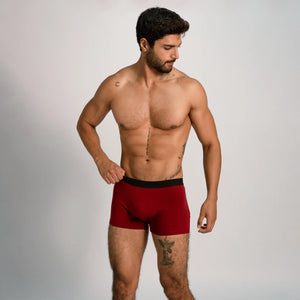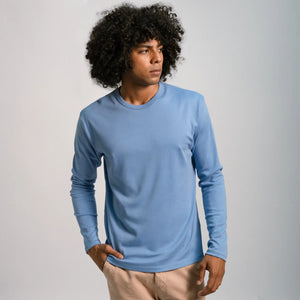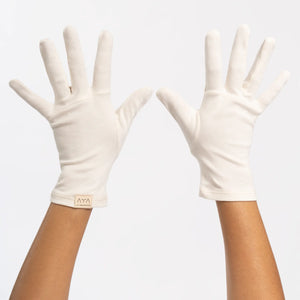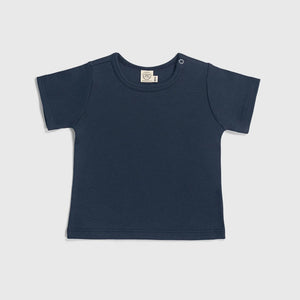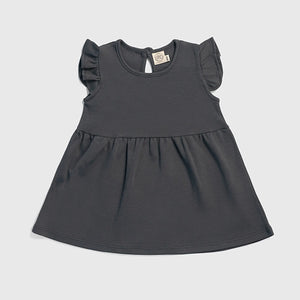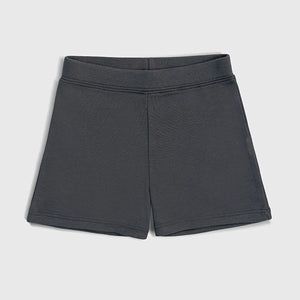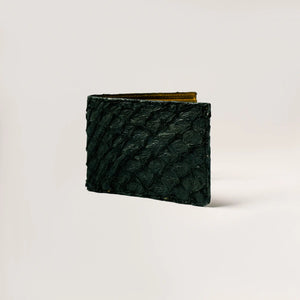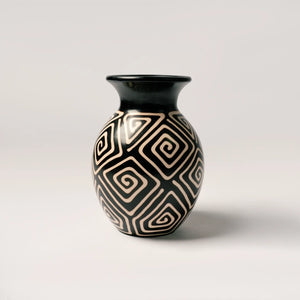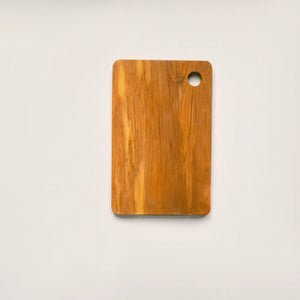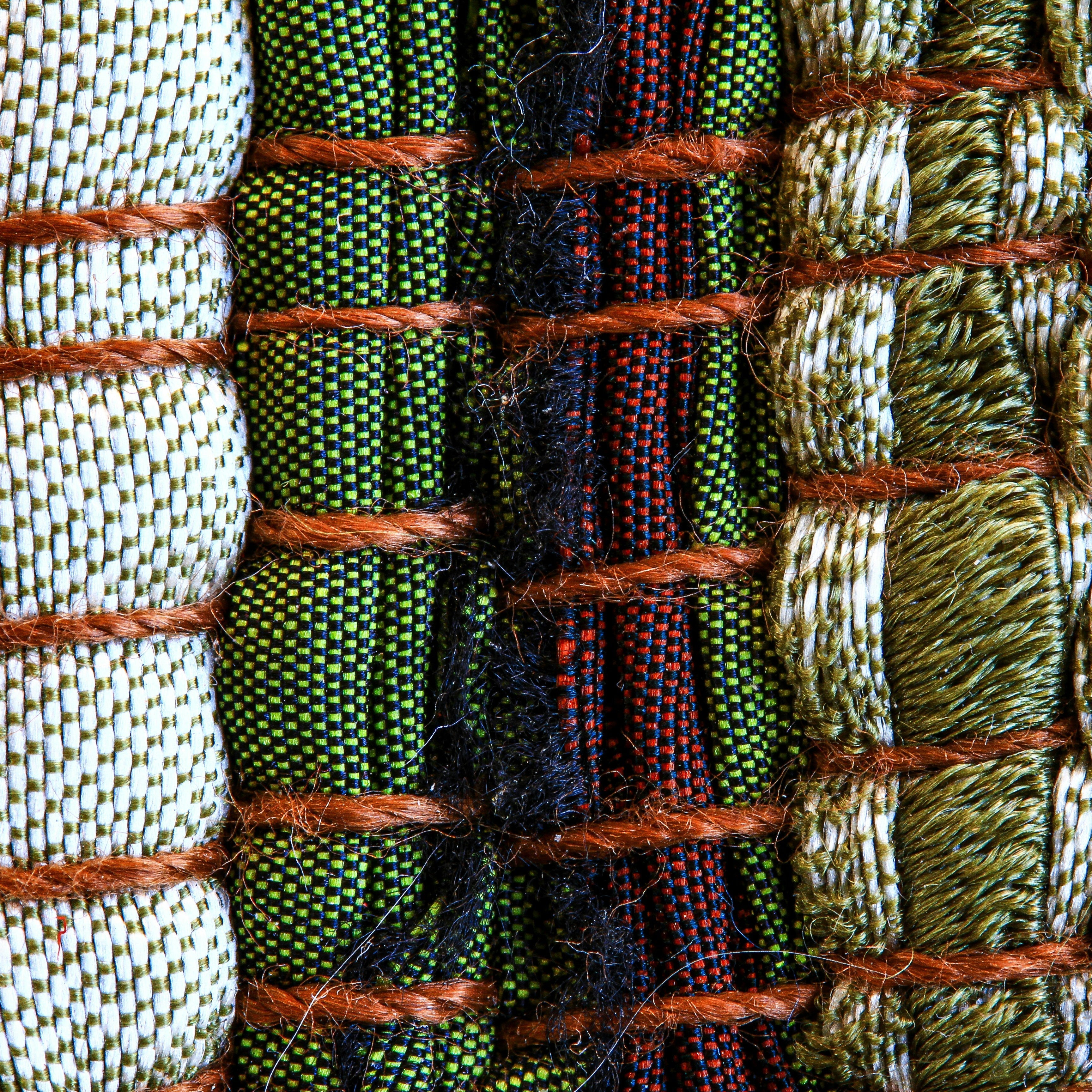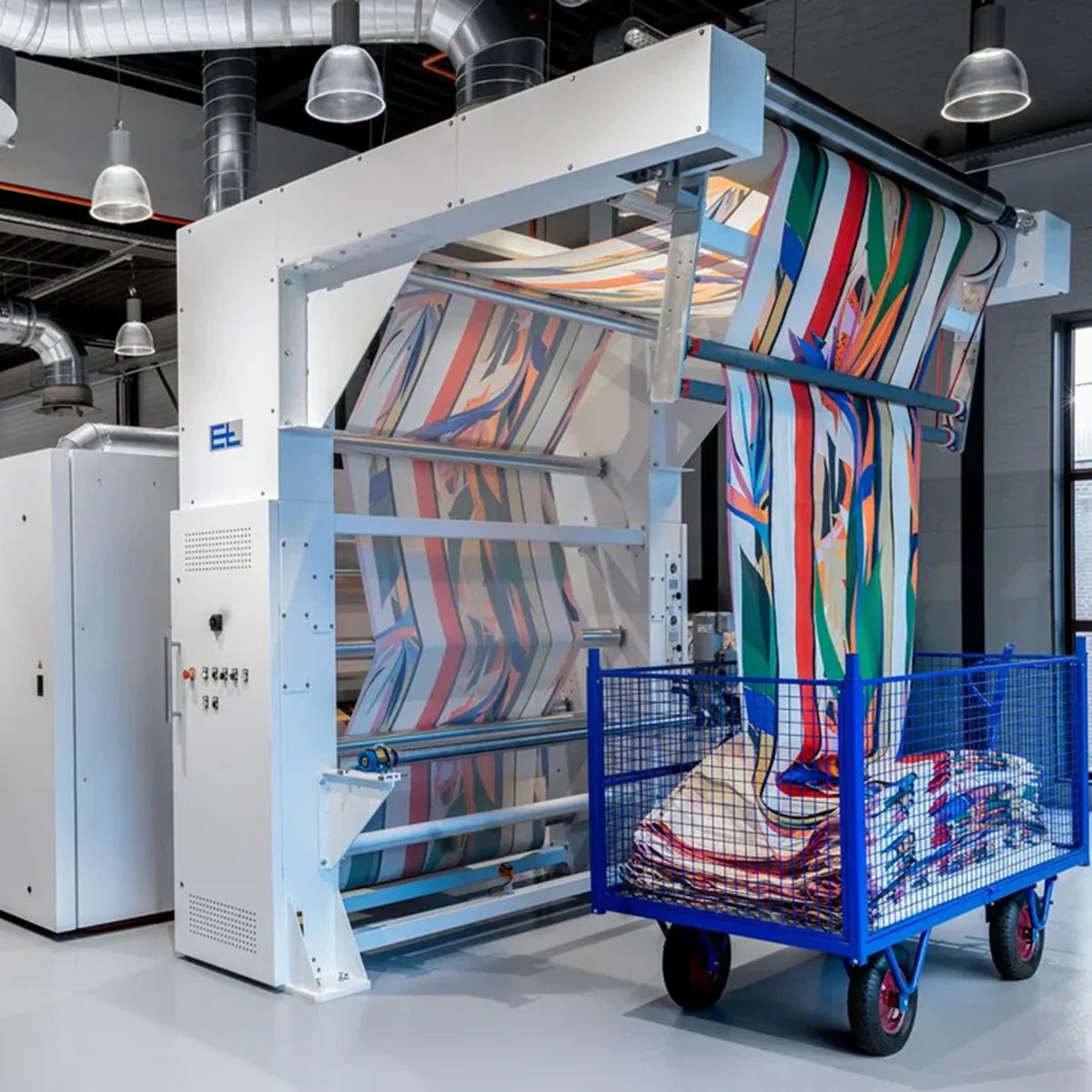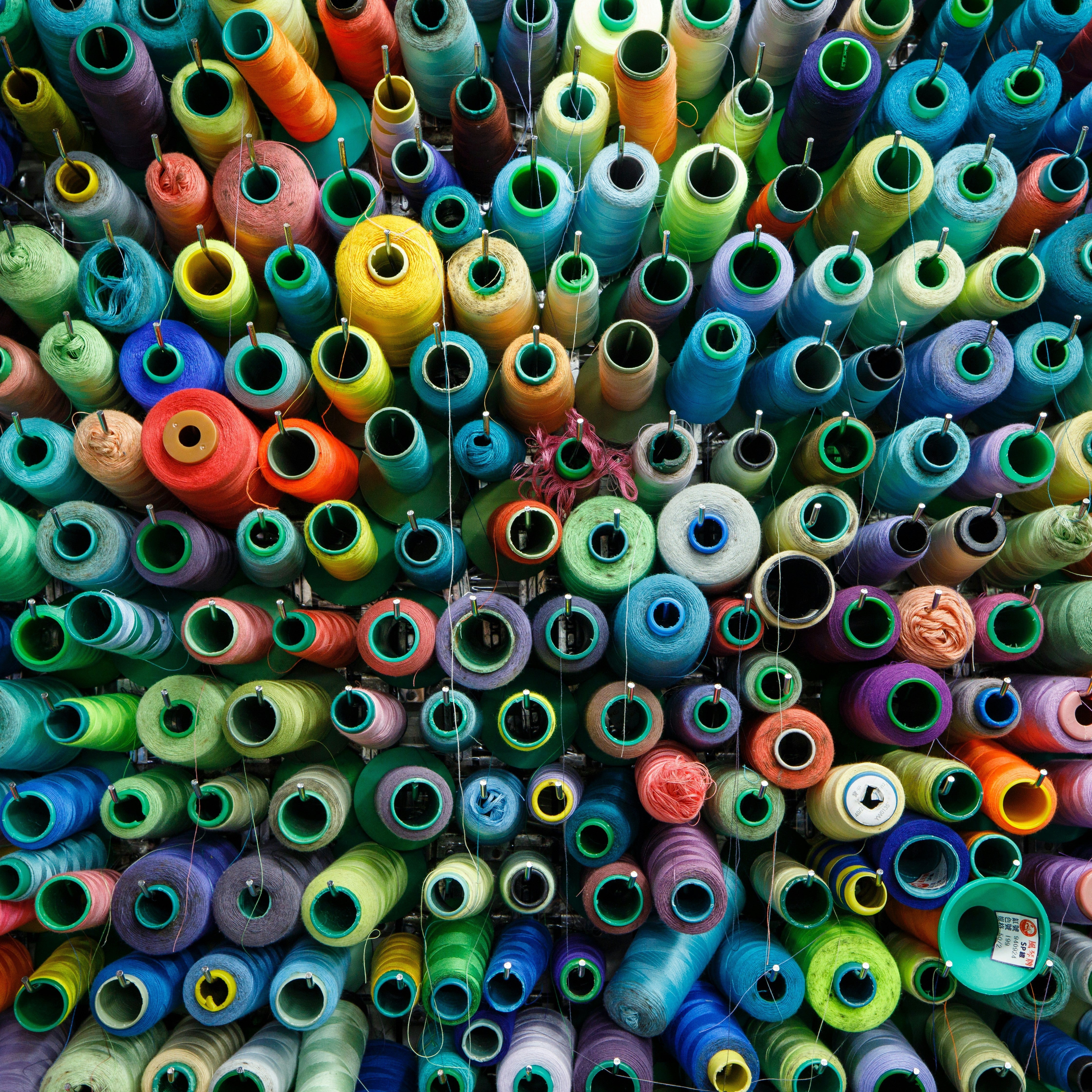The Timeless Appeal of Mother-of-Pearl Buttons:
A Journey from Ocean to Fashion
.
Picture by Roberto Arias.
AYA | FEBRUARY 14, 2025
READING TIME: 6 minutes
Mother-of-pearl buttons have been a staple in fashion for centuries. Their elegance and durability make them an enduring choice in garment design. But beyond their aesthetic appeal, these buttons are rich in history and craftsmanship. In this article we will explore the origin of mother-of-pearl buttons, their creation techniques, their importance and some of the potential risks associated with their misuse and mass production.
The Origins of Mother-of-Pearl: A Precious Gift from the Ocean
Mother-of-pearl, also known as nacre, is a naturally occurring material that forms the inner layer of shells in mollusks like oysters, abalone, and mussels. The word "mother-of-pearl" comes from its resemblance to the pearlescent shine found on the inside of these shells [1,2]. The use of this iridescent material for buttons dates back to ancient civilizations. The earliest uses of mother-of-pearl date back over 5,000 years, with evidence of its use in ancient Egypt, where it was fashioned into jewelry and ornamental items [1,3].
The production of mother-of-pearl buttons, however, became particularly prominent during the 18th and 19th centuries, when the fashion industry boomed in Europe [3]. High-quality buttons were produced in countries like France, Italy, and England, where they quickly became a symbol of wealth and refinement [1,3]. Their use spread internationally, and mother-of-pearl buttons became a popular feature on everything from everyday garments to high-fashion attire.

Dress with shell buttons, 1880s. Image from Fredericksburg & Spotsylvania National Military Park.
Craftsmanship: The Art of Creating Mother-of-Pearl Buttons
Mother-of-pearl buttons are a blend of nature’s beauty and human craftsmanship. The process begins with the careful harvesting of shells from mollusks like oysters, abalone, and mussels, which is typically sourced from mollusks found in oceans around the world. After the shells are collected, they are cleaned and dried to remove any impurities [4].
The next step involves cutting the shells into flat pieces or discs. This process requires extreme precision, as the artisan must cut the material to a size and shape that allows it to be transformed into a smooth, functional button [4]. Special care must be taken to ensure that the material retains its iridescence throughout the process. This natural iridescence and the unique reflective properties of mother-of-pearl are what make it such a sought-after material in fashion. For this reason, this polishing technique has had to go through centuries of perfection, and thus be able to capture and reflect light in a way that no synthetic material can replicate.
Once the shell is cut, the edges are polished to a smooth finish, which gives the button its signature shiny appearance. Often, the buttons are dyed or engraved with intricate designs to enhance their decorative appeal [4].
Modern manufacturing techniques have simplified this process, but many high-quality mother-of-pearl buttons are still hand-crafted by skilled artisans, giving these accessories a unique, custom feel that sets them apart from mass-produced alternatives.

Cutting the shells into pieces. Picture by Ministry of Culture, Azerbaijan.
Sustainability and the Environmental Impact of Mother-of-Pearl
While mother-of-pearl buttons have a long tradition in fashion, there is growing awareness around the environmental and ethical implications of sourcing the material. Overfishing, habitat destruction, and the depletion of mollusk populations are some of the concerns that have emerged in recent years.
In relation to the search for sustainable harvesting methods, researchers emphasize the importance of aquaculture systems that prioritize the health of mollusk populations by creating optimal conditions for breeding and growth, without overexploiting natural populations [3]. These methods, particularly in areas like ablation farming—where shells are harvested from living mollusks without harming their ability to reproduce—, help to mitigate the pressures on wild stocks [3,4].
Research conducted in the South Pacific revealed that regular monitoring of mollusk populations has shown promising results in maintaining healthy shellfish stocks in aquaculture environments [5]. Additionally, the use of environmentally friendly materials and production techniques, including non-toxic dyes and eco-friendly polishing processes, have also been noted as part of the ongoing efforts to reduce the ecological footprint of mother-of-pearl harvesting.

Oyster Fram - Aquaculture. Source: Britannica.com.
The Role of Mother-of-Pearl Buttons in Modern Fashion
Today, the production and use of mother-of-pearl buttons have evolved with a growing emphasis on sustainability and ethical sourcing in the face of fashion giants who have made the use of synthetic materials—including in button manufacturing— their hallmark.
The historical role of mother-of-pearl in European fashion—especially in the 18th century—was driven by its perceived luxury and the high skill required for its crafting [1]. These buttons, once rare and highly coveted, continue to be a emblem of quality and craftsmanship.
The durability of mother-of-pearl is one of the primary reasons it remains a staple in luxury fashion. Studies published in the Journal of Shellfish Research confirmed that mother-of-pearl’s laminated multilayer structure composed of aragonite and proteins—conkerin and conchiolin—gives it remarkable resistance to wear and tear [4,5], providing an ideal balance between elegance and longevity. This is particularly important for high-end clothing, where quality and strength are paramount, and this is why fashion relics still retain their buttons in good condition. Furthermore, the process of creating mother-of-pearl buttons has been perfected over the centuries, the laminated treatment of its layers involves polishing the material to a smooth, shiny finish that enhances its natural iridescence, and its calcium carbonate layers make it resistant to fading and scratches [3,4,5].
The continued use of mother-of-pearl buttons also reflects the growing demand for sustainable fashion because they are no longer just decorative items, but are symbols of cultural history and craftsmanship [1]. These small but significant pieces carry with them the legacy of the regions where they were sourced, reflecting a centuries-old tradition of shellcraft that spans from ancient Egypt to modern-day fashion houses in Europe and Asia [1,3].
The intricate patterns and natural variations in each mother-of-pearl button tell a story of the regions from which they originate, adding a layer of historical value to the garment.
Changing Demographics and Preferences
The pandemic also highlighted shifting demographics in the fashion market. Younger consumers, particularly Gen Z and Millennials, became increasingly influential in shaping purchasing trends. Research from the Institute for Sustainable Fashion indicates that younger generations are more likely to support sustainable brands, with 83% of Millennials stating they prefer to buy from companies that share their values [7,8].
Moreover, with the rise of remote work, many consumers reported a preference for comfort over style. A study published in the Journal of Fashion Marketing and Management noted that comfort became the primary driver of clothing purchases for many consumers, with 65% prioritizing comfort in their buying decisions [9]. This trend is likely to persist as remote work becomes a more permanent aspect of many industries.

Changing Demographics and Preferences
The pandemic also highlighted shifting demographics in the fashion market. Younger consumers, particularly Gen Z and Millennials, became increasingly influential in shaping purchasing trends. Research from the Institute for Sustainable Fashion indicates that younger generations are more likely to support sustainable brands, with 83% of Millennials stating they prefer to buy from companies that share their values [7,8].
Moreover, with the rise of remote work, many consumers reported a preference for comfort over style. A study published in the Journal of Fashion Marketing and Management noted that comfort became the primary driver of clothing purchases for many consumers, with 65% prioritizing comfort in their buying decisions [9]. This trend is likely to persist as remote work becomes a more permanent aspect of many industries.

Changing Demographics and Preferences
The pandemic also highlighted shifting demographics in the fashion market. Younger consumers, particularly Gen Z and Millennials, became increasingly influential in shaping purchasing trends. Research from the Institute for Sustainable Fashion indicates that younger generations are more likely to support sustainable brands, with 83% of Millennials stating they prefer to buy from companies that share their values [7,8].
Moreover, with the rise of remote work, many consumers reported a preference for comfort over style. A study published in the Journal of Fashion Marketing and Management noted that comfort became the primary driver of clothing purchases for many consumers, with 65% prioritizing comfort in their buying decisions [9]. This trend is likely to persist as remote work becomes a more permanent aspect of many industries.

Changing Demographics and Preferences
The pandemic also highlighted shifting demographics in the fashion market. Younger consumers, particularly Gen Z and Millennials, became increasingly influential in shaping purchasing trends. Research from the Institute for Sustainable Fashion indicates that younger generations are more likely to support sustainable brands, with 83% of Millennials stating they prefer to buy from companies that share their values [7,8].
Moreover, with the rise of remote work, many consumers reported a preference for comfort over style. A study published in the Journal of Fashion Marketing and Management noted that comfort became the primary driver of clothing purchases for many consumers, with 65% prioritizing comfort in their buying decisions [9]. This trend is likely to persist as remote work becomes a more permanent aspect of many industries.


Mother-of-pearl buttons in modern fashion. Left: Presence in vintage fashion. Center: Presence in haute couture. Right: Presence in formal fashion.
A Message for the Future: Preserving the Legacy of Mother-of-Pearl
The future of mother-of-pearl in fashion lies in the balance between luxury and sustainability. They have endured the test of time, from their ancient origins to their prominent place in modern fashion. They serve as a testament to the ingenuity of artisans and the natural beauty of the materials they work with. However, as we continue to value these elegant pieces, it is vital to consider their environmental impact.
As a brand committed to sustainability, at AYA we ensure that the mother-of-pearl buttons we use are sourced from reputable, eco-conscious suppliers who adhere to responsible sourcing practices. By supporting these sustainable practices, we are helping preserve marine life while promoting ethical craftsmanship in fashion.
We are proud to contribute to the conversation about ethical fashion. Our use of mother-of-pearl buttons represents a commitment to both quality and sustainability, ensuring that every garment we create not only looks good but also aligns with the values of sustainable fashion.

Picture by Joel Durkee.
At AYA, we are proud to contribute to the conversation about ethical fashion. Our use of mother-of-pearl buttons represents a commitment to both quality and sustainability, ensuring that every garment we create not only looks good but also aligns with the values of sustainable fashion.
Glossarykeywords
Ablation Farming (in aquaculture):
It is the removal of one or both eyestalks of a crustacean. It is performed on female shrimp and prawns to accelerate their sexual maturation and increase their fertility.
Aesthetic Appeal:
The capacity of something to provoke a subjective and affective response referring to the beauty or art of something, and to the appreciation that people have of beauty.
Aquaculture:
It is the set of activities, techniques and knowledge of breeding aquatic, plant and animal species with great relevance today, since it has become the source of inputs for the food industry, a source of raw materials for industrial and pharmaceutical use, and living organisms for repopulation or ornamentation.
Craftsmanship:
Product made by a person who practices a trade or craft as a job, either under cultural traditions or personal innovation.
Iridescent:
Adjective for materials that display many bright colors that change with movement.
Mollusks:
They are coelomate protostome invertebrates, triploblastic, bilaterally symmetrical, non-segmented, with a soft body, naked or protected by a shell, which make up one of the great phyla of the animal kingdom.
Pearlescent Shine:
It is the shine that reflects white light with an intensity that depends on the angle from which it is viewed. Its name is due to the natural essence of the pearl, which also produces the same light-refracting effect.
Shell:
A hard rigid usually largely calcareous covering or support of an animal
Glossarykeywords
Ablation Farming (in aquaculture):
It is the removal of one or both eyestalks of a crustacean. It is performed on female shrimp and prawns to accelerate their sexual maturation and increase their fertility.
Aesthetic Appeal:
The capacity of something to provoke a subjective and affective response referring to the beauty or art of something, and to the appreciation that people have of beauty.
Aquaculture:
It is the set of activities, techniques and knowledge of breeding aquatic, plant and animal species with great relevance today, since it has become the source of inputs for the food industry, a source of raw materials for industrial and pharmaceutical use, and living organisms for repopulation or ornamentation.
Craftsmanship:
Product made by a person who practices a trade or craft as a job, either under cultural traditions or personal innovation.
Iridescent:
Adjective for materials that display many bright colors that change with movement.
Mollusks:
They are coelomate protostome invertebrates, triploblastic, bilaterally symmetrical, non-segmented, with a soft body, naked or protected by a shell, which make up one of the great phyla of the animal kingdom.
Pearlescent Shine:
It is the shine that reflects white light with an intensity that depends on the angle from which it is viewed. Its name is due to the natural essence of the pearl, which also produces the same light-refracting effect.
Shell:
A hard rigid usually largely calcareous covering or support of an animal
References:
[1] Aramco World. The Westward Journeys of Buttons. 2020. Available from: https://www.aramcoworld.com/articles/2020/the-westward-journeys-of-buttons
[2] Devitt T. Mother of pearl tells a tale of ocean temperature, depth. University of Wisconsin News. 2012 Feb 16. Available from: https://news.wisc.edu/mother-of-pearl-tells-a-tale-of-ocean-temperature-depth/
[3] Siddique MF, Haque MA, Barman AC, Tanu MB, Shahjahan M, Uddin MJ. Freshwater pearl culture in Bangladesh: Current status and prospects. Heliyon. 2024 Apr 15;10(7):e29023. doi: 10.1016/j.heliyon.2024.e29023.
[4] Sakalauskaite J, Andersen SH, Biagi P, Borrello MA, Cocquerez T, Colonese AC, Dal Bello F, Girod A, Heumüller M, Koon H, Mandili G, Medana C, Penkman KEH, Plasseraud L, Schlichtherle H, Taylor S, Tokarski C, Thomas J, Wilson J, Marin F, Demarchi B. 'Palaeoshellomics’ reveals the use of freshwater mother-of-pearl in prehistory. eLife. 2019 May 7;8:e45644. doi: 10.7554/eLife.45644.
[5] Johnston W, Hine D, Southgate PC. Overview of the development and modern landscape of marine pearl culture in the South Pacific. J Shellfish Res. 2019 Dec 26;38(3):499-518. doi: 10.2983/035.038.0301.
You don't have to put all the weight on your shoulders. Every action counts. At AYA, we fight microplastic pollution by making a 100% plastic-free catalog.
Visit Our Shop →You May Also Like to Read...
Plant-Based Power in Sustainable Fashion
An analysis of why cotton remains so popular and how improved water management practices can mitigate the environmental footprint of textile agriculture.
Innovations in Sustainable Fashion: How Technology Is Reshaping Clothing Manufacturing
Discover cutting-edge innovations in sustainable clothing manufacturing, from enzyme-based textile treatments to 3D knitting and digital printing.
Fashion’s Resources: How Sustainable Are They?
Discover the truth about fashion’s resources. Are organic cotton, alpaca wool, and recycled textiles truly sustainable? Explore key materials and eco-friendly practices.
The Fight for Gender Equality: Why We Commemorate International Women’s Day
Discover the real history behind this International Women’s Day, the ongoing struggles of women worldwide, and why ethical fashion matters in this fight.
